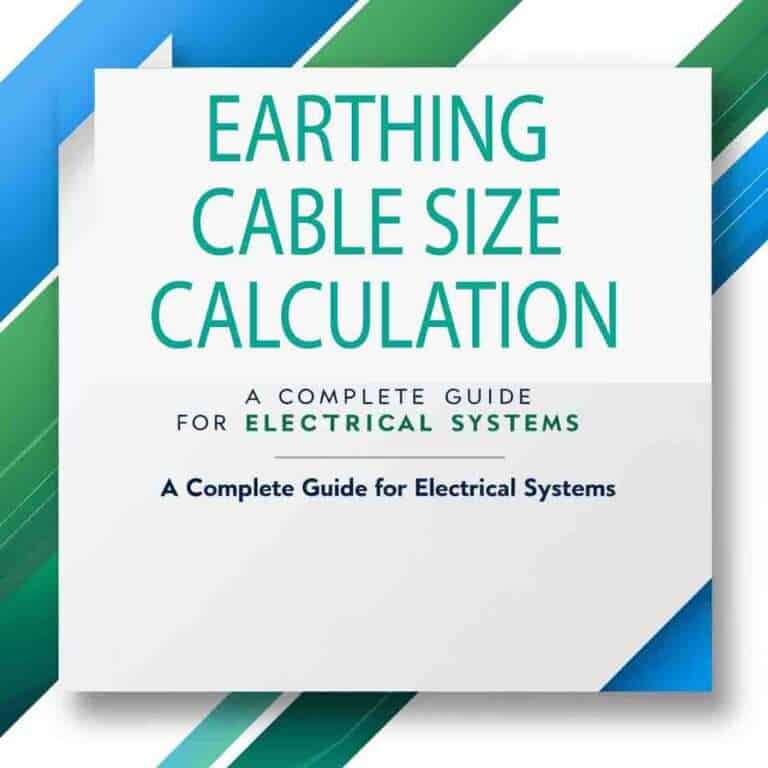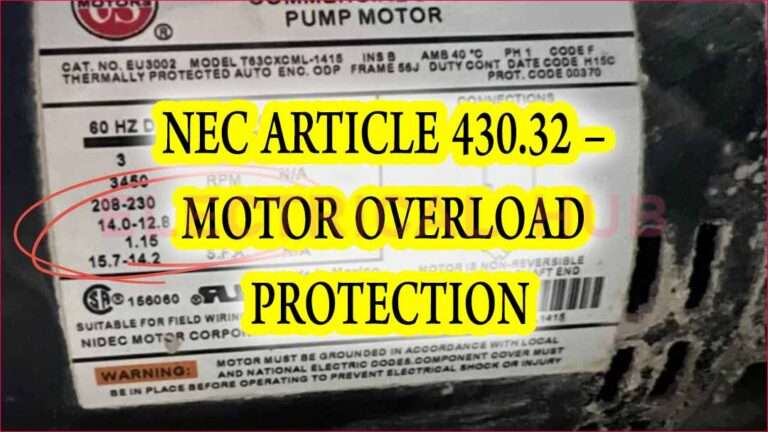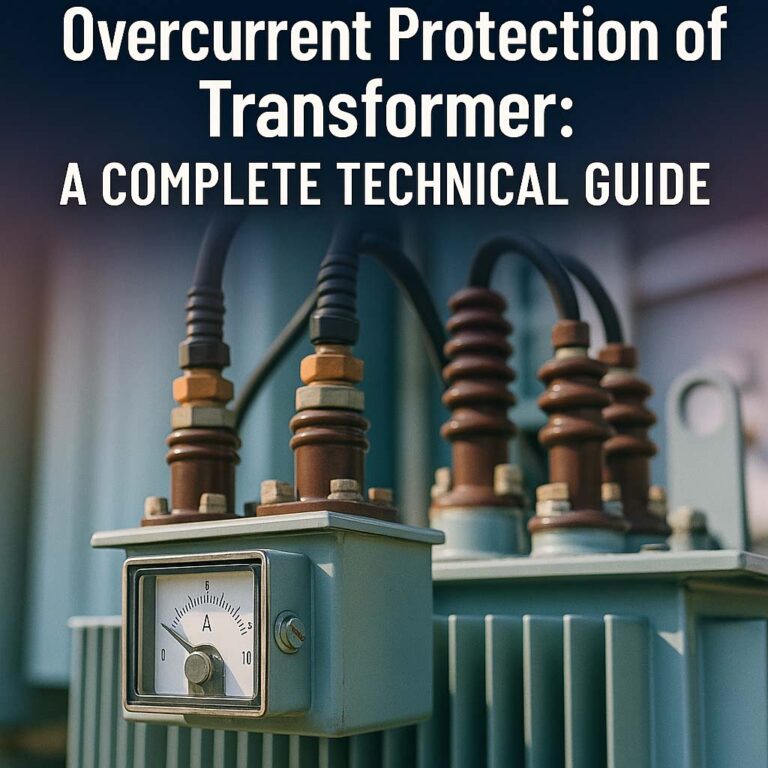Earth Cable Size Calculator: Best Tool to Size Earthing Cables
When it comes to designing a safe and efficient electrical system, proper earthing is not optional—it’s essential. Earthing cables carry fault current safely to the ground, protecting both equipment and human life. But how do you size them correctly? That’s where an Earth Cable Size Calculator becomes incredibly useful.
This calculator is designed to help engineers, electricians, and solar installers find the right earth conductor size for different applications. Whether you’re working on a domestic system, an industrial panel, or a solar project, choosing the correct earthing cable is critical for safety and compliance.
Table of Contents
Table of Contents
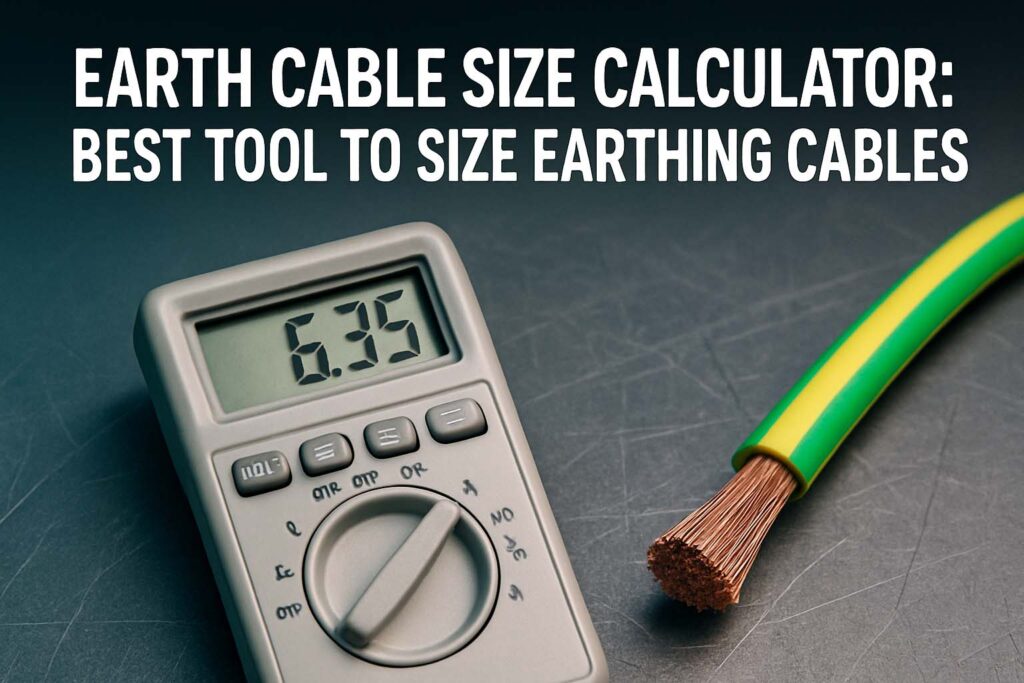
Without proper grounding, electrical faults can lead to dangerous voltage levels on exposed metal parts. These faults, if not quickly cleared, can cause fires, electric shocks, or complete system failure. To prevent this, your grounding system must be sized based on fault current, fault duration, and the resistivity of the conductor.
Key Takeaways
- The Earth Cable Size Calculator simplifies the process of selecting the correct size of earthing conductor.
- It is based on international standards like IEC 60364 and takes into account fault current, time, and conductor material.
- Using the wrong earth cable size can lead to safety risks, overheating, and failure to meet electrical codes.
Use our online tool Circuit Breaker Size Calculator for Appliances
Why Use an Earth Cable Size Calculator?
Choosing the correct size of an earthing cable is not just about using a thick wire. It’s about calculating the thermal and electrical limits under fault conditions. The earth cable must be capable of carrying the expected fault current for a specific time without melting or breaking down.
Manual calculations are complex. You need to understand conductor materials (like copper or aluminum), short-circuit fault current (in kA), and the time it takes for protective devices to operate. Then there’s the constant “k”, which depends on the conductor material and insulation type.
An Earth Cable Size Calculator does all this instantly. It uses the standardized adiabatic equation and factors in all relevant parameters. This saves time and reduces the chance of error.
How Does the Earth Cable Size Calculator Work?
The calculator uses a version of the adiabatic equation:
S = I × √t / k
Where:
- S = Minimum cross-sectional area of the conductor (mm²)
- I = Fault current (A)
- t = Disconnection time of the protective device (seconds)
- k = Material constant based on conductor type and insulation (e.g., 143 for copper, PVC-insulated cables)
This formula ensures that the cable does not exceed its thermal limit during the fault.
You just need to input:
- Fault current (in Amperes)
- Fault duration (in seconds)
- Conductor material (Copper or Aluminum)
- Type of insulation (PVC, XLPE, etc.)
The result is a recommended earth cable size in mm².
Use our online tool Watt to Amp Calculator (Single & Three-Phase)
Table: k Constants for Common Cable Types
| Material | Insulation Type | k Value (A·s½/mm²) |
|---|---|---|
| Copper | PVC | 143 |
| Copper | XLPE | 226 |
| Aluminum | PVC | 94 |
| Aluminum | XLPE | 148 |
These k-values are defined in IEC standards and vary depending on insulation thermal limits.
When Should You Use the Calculator?
The Earth Cable Size Calculator is useful in the following cases:
- Designing main grounding systems for residential and commercial buildings
- Calculating earthing for transformers and generators
- Sizing protective earthing for industrial control panels
- Evaluating earthing in solar power installations
- Retrofitting or upgrading existing electrical systems
In each of these cases, knowing the right earth cable size avoids costly mistakes and enhances safety.
Factors Influencing Earth Cable Sizing
While the adiabatic formula is the base, multiple factors affect the size of the earth cable:
1. Fault Current Magnitude
A higher fault current requires a larger conductor to handle the energy safely.
2. Disconnection Time
The longer the fault lasts, the more heat is generated. Faster protection means smaller cable size.
Use our online tool AWG to mm² Calculator – Convert Wire Sizes Easily and Accurately
3. Conductor Material
Copper can carry more current than aluminum of the same size. That’s why copper is usually preferred in critical systems.
4. Insulation Type
PVC has a lower thermal limit than XLPE, meaning a larger size is often needed with PVC insulation.
5. Ambient Temperature and Installation Method
These don’t affect the adiabatic equation directly but matter when sizing for long-term current-carrying capacity, especially for bonding conductors.
Comparison: Manual vs Calculator-Based Sizing
| Parameter | Manual Calculation | Earth Cable Size Calculator |
|---|---|---|
| Time Required | 10–30 mins | Under 1 minute |
| Knowledge Needed | High (Electrical Engineering) | Low to Medium |
| Accuracy | Depends on user | High and consistent |
| Error Chances | High (manual mistake risk) | Very low |
| Ideal For | Experts only | Electricians, Engineers, DIYs |
Use our online tool Electrical Conduit Fill Calculator and Conduit Wire Fill Chart
Best Practices When Using an Earth Cable Size Calculator
Always use accurate inputs. Fault current and disconnection time must be measured or estimated using reliable data. If in doubt, consult the protective device’s datasheet or system short-circuit study.
Choose conservative values. If the fault current or time is variable, go with the highest realistic value to stay on the safe side.
Factor in real-world conditions. Even though the calculator gives a thermal limit size, ensure that mechanical strength and long-term capacity are also considered—especially in harsh environments.
Verify with standards. Cross-check the calculator’s recommendation with local or international standards such as:
- IEC 60364-5-54
- BS 7671 (UK Wiring Regulations)
- NEC (National Electrical Code) for U.S. systems
Real-World Example: Earthing a 3-Phase Transformer
Let’s say you’re installing a 100 kVA, 3-phase transformer with a potential short-circuit current of 4.5 kA, and your protective relay operates in 0.4 seconds.
Assuming copper conductor with XLPE insulation:
- S = I × √t / k
- S = 4500 × √0.4 / 226
- S ≈ 4500 × 0.632 / 226 ≈ 12.6 mm²
The calculator will round this to the nearest available size, usually 16 mm² for safety margin.
Why Earth Cable Size Matters So Much
Undersizing an earth cable is risky. In the event of a fault, an undersized conductor could melt or catch fire before the breaker or fuse trips. Overheating may damage insulation and surrounding wiring, leading to cascading failures.
Oversizing, on the other hand, increases cost unnecessarily and may complicate cable handling and routing—especially in tight panels.
That’s why calculators are not just about convenience—they help achieve the right balance between safety, efficiency, and cost.
Use our online tool Conduit Fill Calculator (NEC Standard) – Understand Conduit Fill and Wire Capacity
Benefits of Using an Earth Cable Size Calculator
- Saves time in design and field installations
- Reduces errors caused by manual calculations
- Improves safety by recommending accurate sizes
- Ensures compliance with electrical standards
- Works for all types of installations: homes, offices, solar, industrial
Conclusion: Earth Cable Size Calculator is an Essential Tool
Sizing an earthing conductor is not just another design task—it’s a safety-critical decision. With the right Earth Cable Size Calculator, this complex process becomes fast, accurate, and reliable.
Whether you’re an engineer designing industrial systems or an electrician wiring a home, you’ll benefit from using a trusted calculator. It brings technical precision without the burden of manual math, ensuring you meet safety codes and optimize material usage.
Follow Us on Social:
Subscribe our Newsletter on Electrical Insights for latest updates from Electrical Engineering Hub
#EarthCableSizeCalculator, #EarthingCable, #ElectricalCalculator, #CableSizing, #EarthingSystem, #ElectricalEngineering, #GroundingCable, #WireSizeCalculator, #MCBCalculator, #ElectricalTools, #LoadCalculation, #ElectricalDesign, #PowerDistribution, #SafetyGrounding, #ElectricianLife
Earth Cable Size Calculator: Best Tool to Size Earthing Cables : Electrical Engineering Hub
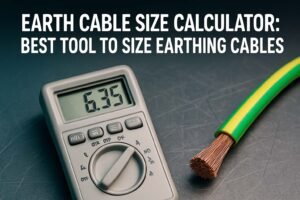
Accurately calculate the right earth cable size for your electrical or solar installation. Use our Earth Cable Size Calculator to find safe, efficient earthing conductor sizes based on current, length, and voltage drop. Ideal for engineers, electricians, and homeowners.
Price Currency: USD
Operating System: All
Application Category: UtilitiesApplication

